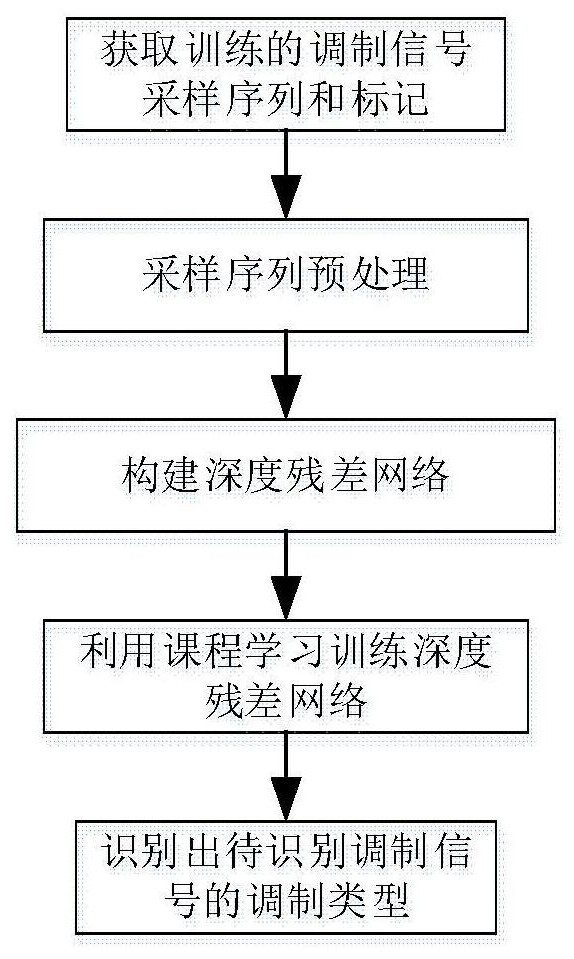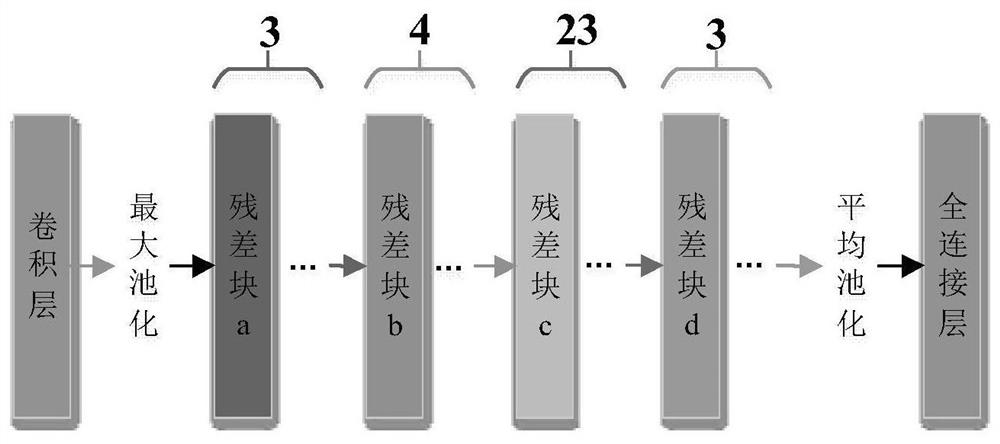Modulation Signal Recognition Method Based on Curriculum Learning
A technology for modulating signals and identifying methods, applied in the field of communication, can solve the problems of data noise overfitting and low recognition rate
- Summary
- Abstract
- Description
- Claims
- Application Information
AI Technical Summary
Problems solved by technology
Method used
Image
Examples
Embodiment Construction
[0030] The present invention will be described in further detail below in conjunction with the accompanying drawings and specific embodiments.
[0031] refer to figure 1 , the implementation steps of this example include the following:
[0032] Step 1, obtain the training modulated signal sampling sequence and label.
[0033] The modulation signals identified in this example include 2ASK, 4ASK, 8ASK, 2FSK, 4FSK, 8FSK, 2PSK, 4PSK, 8PSK, 16QAM and 64QAM, and the sampling sequences and marks are generated as follows:
[0034] 1.1) Through simulation, it contains 16 symbol periods, and the symbol period is 10 -6 s, the modulation signals of the above 11 different modulation types with a carrier frequency of 2MHz, each modulation signal includes 10,000, the signal-to-noise ratio ranges from -20dB to 18dB, and the step is 2dB, a total of 20 kinds of signal-to-noise ratios, and each The number of modulation signals of the signal-to-noise ratio is the same;
[0035] 1.2) Sampling ...
PUM
 Login to View More
Login to View More Abstract
Description
Claims
Application Information
 Login to View More
Login to View More - R&D
- Intellectual Property
- Life Sciences
- Materials
- Tech Scout
- Unparalleled Data Quality
- Higher Quality Content
- 60% Fewer Hallucinations
Browse by: Latest US Patents, China's latest patents, Technical Efficacy Thesaurus, Application Domain, Technology Topic, Popular Technical Reports.
© 2025 PatSnap. All rights reserved.Legal|Privacy policy|Modern Slavery Act Transparency Statement|Sitemap|About US| Contact US: help@patsnap.com



